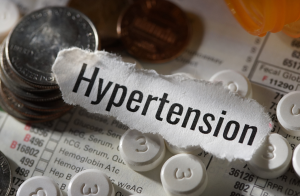By Jerry Mitchell
MCIR
Mississippi — the world’s leader in imprisoning people — will soon skyrocket past its capacity to hold them all.
In just 10 months, the state’s prison population has exploded, rising almost twice as fast as inflation. If this rate persists, the Mississippi Department of Corrections would exceed its listed capacity of 20,443 over the next several months.
Eldon Vail, an inspector of Mississippi prisons in recent years, called the alarming rate “pouring gasoline on a top of a fire that is already raging.”
Between 1993 and 2013, the state’s prison population more than quadrupled, thanks largely to mandatory minimum sentences, with the population peaking in the past decade at more than 23,000. That prompted a push for reforms that included House Bill 585, which then Republican Gov. Phil Bryant signed into law in 2014.
In the years since, reforms and an aggressive Parole Board reduced the number of inmates. By 2016, Mississippi had fallen into third place in per capita imprisonment, trailing Louisiana and Oklahoma.
Five years later, additional reform took place with the passage of the Mississippi Earned Parole Eligibility Act, which gave thousands more inmates the opportunity to go before the Parole Board. By Feb. 7, the prison population had fallen to 16,499, the lowest level in two decades.
That fall mirrored the nation, which saw the prison population decline more than 16% in all states but one between 2019 and 2021, according to the Vera Institute of Justice. (The lone holdout? Alaska, which rose 3.6%.)
But under the leadership of new Parole Board Chairman Jeffrey Belk, that trend has reversed itself.
Ten months later, Mississippi’s prison population now exceeds 19,000 in what the Corrections and Criminal Justice Oversight Task Force calls “unprecedented growth.” If this growth continues at the same rate through 2023, that population would surpass 22,500 for the first time since 2010.
If Mississippi hits that number, taxpayers would be forced to pay $111 million more a year than they were paying in 2020 before the population hike, based on the per-day cost figured by the state’s legislative watchdog, Performance Evaluation and Expenditure Review. That’s more than enough to fund the state Department of Health, the governor’s office and a dozen other state agencies.
“While other states are reducing their prison populations, Mississippi is backsliding, thanks in large part to the actions of the Parole Board,” said Cliff Johnson, director of the MacArthur Justice Center at the University of Mississippi School of Law. “It’s demoralizing. It’s infuriating. And it’s terrible corrections policy.”
The population increase has come, despite the decline in Mississippians sentenced to prison, going from 4,270 in 2018 to 3,189 over the past year, according to the task force’s report.
In an interview, Belk told MCIR that the Parole Board is “not a numbers-driven board.”
Some people want the board to “just blindly parole people and not care if they come back,” he said. “We’re not going to do that.”
For his part, Corrections Commissioner Burl Cain said he isn’t worried about MDOC surpassing capacity, because his agency is creating 660 new spaces inside Mississippi prisons. That includes a move of all female inmates from Central Mississippi Correctional Facility in Pearl to the Delta Correctional Facility in Greenwood.
To curb the rise in prison population, he’s banking on better drug rehabilitation and job training programs to reduce recidivism.
About three-fourths of those behind bars in Mississippi battle drug or alcohol problems or both. Cain said a robust rehabilitation program is now available to 2,700 different inmates.
While serving as superintendent of the Louisiana Penitentiary at Angola, he established a job training program that resulted in a three-year recidivism rate of 9.4% for those who finished the program compared with 34% for the average inmate, according to the Louisiana Commission on Law Enforcement.
He hopes to replicate that success in Mississippi, where the three-year recidivism rate is about 33% and the five-year rate is 77%, according to the 2022 World Population Review.
So far, “we have about 170 inmates in the program,” with more to come, he said.
Most of the instructors, who are inmates, earn 25 to 30 cents an hour, or about $52 a month, he said. “It gives them a little bit of independence, and it’s really good for morale.”
MDOC’s work release program plays a companion role in this. “We have 23 out of 25 inmates in jobs making $15 an hour,” he said. “They’re not going to come back.”
Senior U.S. District Judge Keith Starrett of Hattiesburg, who chairs Mississippi’s Reentry Council, praised Cain for providing job training, moral training and job certification. “Reducing recidivism saves lives, money, families and communities,” he said.
House Bill 585 sought to reduce prison overcrowding, which the Pew Foundation estimated would save Mississippi $266 million over a decade.
But the lawmakers’ promise to use those savings for corrections programming never took place, Starrett said. “The Legislature looks out for a lot of folks, but prisons and programs that reduce recidivism are way down on their list of priorities.”
The weak link is the follow-up in programming for those






